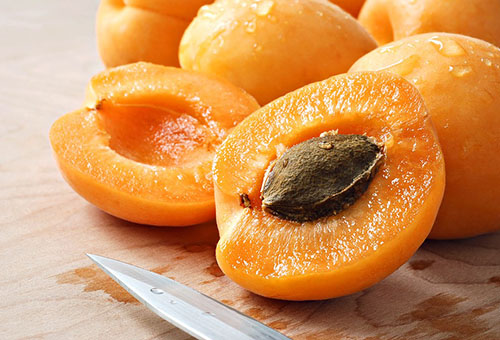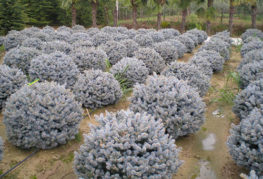How to properly grow an apricot from a stone
In order for the cultivation of apricot from the stone to justify all the hopes imposed, you need to know a few secrets and follow the basic simple rules of planting and care. Apricot is a heat-loving, southern plant, everyone knows this, but it is quite possible to plant and grow it at home. First of all, you need to choose the right seed, then germinate it, and then provide the plant with such care so that it will thank the owner with delicious fruits.
Choosing the right bone
You can preliminary assess the quality of the bone by the appearance of the fruit itself. It should be ripe, preferably rich orange with a reddish barrel, with a pronounced characteristic aroma, as soft to the touch as possible. The softness should be even if the fruit is soft on only one side, perhaps this is a sign of incipient decay or a consequence of bruising. Having chosen several such fruits, they must be put at home for a couple of days so that they, as they say, reach.
There is another way to help determine the quality of the seed in terms of planting. You need to take a few fruits and break them to extract the stone. If the pulp separates easily, then the fruit is ripe. Then the bone must be split, taking out the nucleolus. It should be tasted. A sweet, tasty kernel indicates that the seed will not only germinate with a high degree of probability, but also that the grown tree will yield good fruits over time. If the "nut" turns out to be bitter, then it is better to leave the attempt to grow trees from such seeds, you should look for other apricots. For the purity of the experiment, it is worth tasting a few bones.
Another important point is the apricot variety to be grown. If the idea to plant a seed came up spontaneously, for example, after the apricot was eaten, then the result will be just as unpredictable. It is advisable to at least find out which variety of apricots were purchased, and then find out all the varietal characteristics. If the plant belongs to the “southern” variety, which requires a lot of heat and sun, then growing it in temperate climates will not be easy. At best, the plant will be weak and unviable. In this case, there is no need to talk about getting a harvest.
It is better to approach this task more deliberately. You can choose in advance a variety that is most adapted to the conditions where it is to be grown. There are Far Eastern and Siberian varieties of apricots that are more resistant to the climatic conditions of the middle zone. You can ask about the availability of varieties that grow specifically in this region - their planting will give the best result. It is practically useless to try to grow an apricot imported from distant countries. Most likely, it will not be possible to recreate the conditions familiar to him. The tree may germinate, but with a high degree of probability it will die.
Basic landing rules
You can plant an apricot tree in two main ways: directly into open ground, imitating a natural process, and germinate seeds at home, planting already strengthened sprouts on the site. The first method, of course, is the simplest, it does not require almost any additional effort, but as a result, one cannot be sure. The seeds may not germinate or not survive the winter frosts, rodents can destroy them, etc. If shoots are found in the spring, then everything is in order, all that remains is to take care of the tree and help it grow.It is better to pre-fence or in some other way designate the landing site, otherwise it may not be found in the spring.
The second method will require, albeit insignificant, but still efforts. But the hatched bones can be selected immediately, respectively, the chances of success are maximum.
Growing an apricot tree from a stone at home includes the following main steps:
- collect, rinse and dry the seeds in summer at room temperature;
- in winter, soak dried bones in warm water for two days;
- soak the bones in hydrogen peroxide for 5 minutes;
- place them in a plastic glass, wrap with foil, put on the lower shelf of the refrigerator;
- periodically check the seeds, if necessary, re-treat with hydrogen peroxide (if mold has formed);
- with the appearance of roots (approximately in the middle of spring), remove the bones from the glass;
- plant each seed in a separate glass with soil, cover with another glass (transparent);
- after the emergence of shoots, remove the shoots from the glass, plant on the site.
Planting in open ground should be carried out no earlier than mid-May, so that the threat of frost has finally passed, since the young apricot tree will not withstand them. It is advisable to additionally protect the sprout from drafts and wind. To do this, you can surround it with a cylinder made, for example, from a plastic bottle, cutting off the bottom and top of it.
Advice
If you want to get a stronger and larger plant, it is better to germinate seeds at home, such sprouts outrun their peers grown in the open field in many respects.
Apricot tree care
Apricot loves light and warmth, therefore, the most sunny place should be chosen for it. A small sprout can be transplanted to a permanent place of growth one year after the first planting in the ground. If there is more than one tree, then it is better to maintain a distance of about three meters between them, so that each plant is comfortable. The soil around the seedling must be loosened, but very carefully, since the roots of the apricot are quite sensitive and vulnerable.
As the tree grows, it must be pinched. This is done not only for the formation of the crown, but also so that the overly elongated plant does not die during the winter cold. Once the sprout has reached 20 cm in height, it should be pinned. Side shoots will appear, they are also pinched, preventing unwanted stretching. This procedure helps, among other things, to somewhat delay the flowering period of the apricot, which allows you to save the inflorescences from death in the event of a return of frost.
Advice
If the tree has thorns, you can throw it away without regret, since it will not give tasty fruits. If the trunk is smooth, it means that it has gone "along the maternal line" and the harvest will be successful.
The apricot tree needs regular watering, as well as whitewashing of the trunk with lime every spring and autumn, starting from the second year of life. It is better to plant several apricot trees at once, this has a good effect on the pollination process. Usually apricots bear fruit abundantly, so it is better to take care of the supports under the branches in advance so that they do not break when the tree is covered with a lot of fruits. Gratefully, this plant will respond to both the introduction of lime and the mulching of the soil around it. In addition, the apricot must be covered for the winter, protecting not only the branches, but also the roots.
No matter how the apricot tree is planted, it will definitely bring joy to the owner. Compact, branched, it is irresistibly beautiful during the flowering period. By the time the fruits ripen, it is also very beautiful, since often located bright apricots are clearly visible against the background of juicy green leaves. In addition, the fruits of this tree are not only unusually tasty and healthy fresh, but also retain their valuable properties in the form of blanks.
An excellent jam is obtained from apricots, on their basis you can make savory sauces. Dried fruits, better known as dried apricots, are generally used for various health problems. The plant is not too demanding in care, it can be grown without much effort. Thus, there are many reasons for growing apricots on your site. We must constantly experiment, make the most daring attempts, then the garden will become really beautiful and blooming.






and will be published shortly.